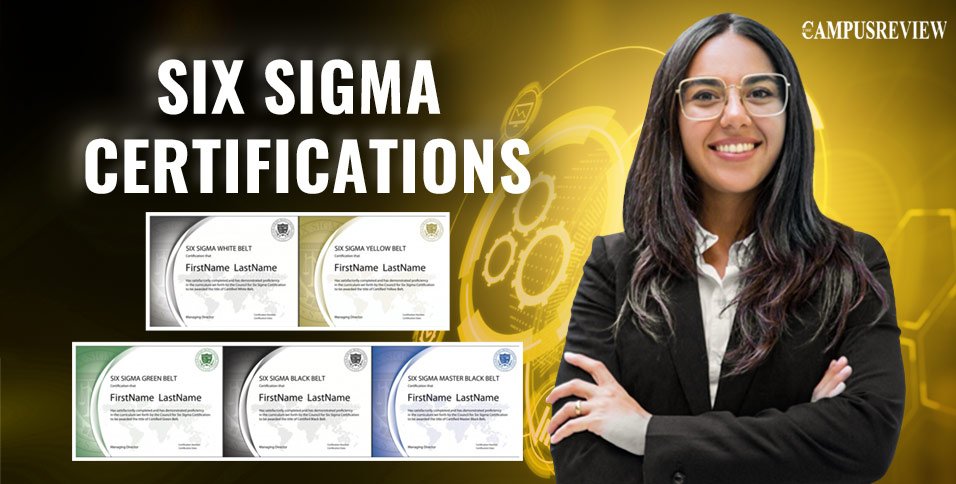Six Sigma might sound technical, but it’s just a smart way to fix problems and make things better. Whether it’s reducing waste in a factory or improving hospital services, Six Sigma helps teams solve problems with data and logic. Companies love it. And guess what? They love hiring people who understand it even more.
For students and early-career professionals, Six Sigma certifications are not just for engineers. They’re for anyone who wants to become a smarter problem-solver. Whether you’re into business, healthcare, sports analytics, or IT, these certifications open doors. Just like top athletes train to perfect every serve and volley, professionals train with Six Sigma to master efficiency and precision. Even elite women’s tennis players benefit from analytics-driven training—something Six Sigma can help manage behind the scenes.
Let’s dive into the top Six Sigma certifications that can put your career in fast-forward mode.
Top 11 Six Sigma Certifications for Students and Young Professionals
| Certification | Best For |
| Six Sigma Yellow Belt | Absolute beginners and students |
| Lean Six Sigma Yellow Belt | Students interested in speed + quality |
| Six Sigma Green Belt | Entry-level professionals and interns |
| Lean Six Sigma Green Belt | Those interested in process + waste reduction |
| ASQ Six Sigma Certifications | High recognition for final-year students and freshers |
| IASSC Six Sigma Certifications | International credibility; students & early employees |
| CSSC Programs | Budget-friendly and accessible to students |
| Certified Six Sigma Professional (CSSP) | Interns with practical exposure |
| Six Sigma Black Belt | Working professionals (2+ years) |
| Lean Six Sigma Black Belt | Professionals in leadership roles |
| Master Black Belt Certification | Senior project leads (5+ years’ experience) |
Certification Overviews (Student-Friendly Summaries)
Below is a quick overview of all 11 certifications, ideal for students and early professionals looking to choose the right path.
- Six Sigma Yellow Belt Certification
This is the perfect starting point for absolute beginners. It covers the foundational principles of Six Sigma, including process mapping, team roles, and basic metrics. You’ll learn how to identify problems, collect data, and assist in project tasks. It’s short, affordable, and requires no prior experience, making it ideal for students and entry-level professionals.
- Lean Six Sigma Yellow Belt Certification
This certification combines Lean principles with basic Six Sigma methods. It teaches you how to remove waste while improving quality. You’ll understand how to spot inefficiencies and suggest quick fixes. Ideal for fast thinkers and those who love structured problem-solving, it’s great for students wanting to boost their resumes without deep technical skills.
- Six Sigma Green Belt Certification
For students with some work or internship experience, this level lets you manage small projects and apply Six Sigma tools. It emphasizes the DMAIC method and teaches how to analyze and solve quality issues. You’ll lead small teams and get noticed for taking initiative. It’s often required before advancing to the Black Belt level.
- Lean Six Sigma Green Belt Certification
This certification gives you the power to lead improvement projects by reducing waste and optimizing processes. It combines Lean’s speed with Six Sigma’s quality methods. Students with hands-on experience or coursework in business improvement will find this especially useful. You’ll be well-prepared to streamline operations and improve workflows.
- ASQ Certifications (American Society for Quality)
ASQ offers highly respected certifications for serious quality management learners. It includes Yellow, Green, and Black Belt levels. You’ll need to show proof of work or project experience. ASQ-certified professionals are globally recognized. If you’re in your final year or have solid internship experience, this could give your resume a global edge.
- IASSC Certifications
The International Association for Six Sigma Certification offers rigorous exams with worldwide recognition. No formal experience is needed, but training is recommended. IASSC’s exams are tough but fair, and ideal for those looking for global job opportunities. It’s perfect for students aiming for a career with multinational companies.
- CSSC Certifications (Council for Six Sigma Certification)
This certification body offers flexible and budget-friendly options. Great for students, CSSC provides both free and paid certifications at all levels. The learning is accessible, and you can get certified at your own pace. It’s recognized in many industries and is suitable for learners without prior technical experience.
- CSSP (Certified Six Sigma Professional)
This certification is focused on applying Six Sigma in real-world projects. It’s meant for individuals with hands-on experience, like interns or fresh graduates who’ve worked in live environments. You’ll get to showcase your skills in practical settings and solve business challenges using proven Six Sigma tools.
- Six Sigma Black Belt Certification
Black Belt is for professionals who’ve already completed Green Belt and have led projects. You’ll learn advanced techniques and become a mentor for others. This certification is highly valued for leadership roles and strategic initiatives. If you’ve worked in teams and want to lead bigger ones, this is your step up.
- Lean Six Sigma Black Belt Certification
This builds on Green Belt and focuses on process efficiency and leadership. You’ll lead teams that cut costs and improve speed while maintaining quality. It’s best for professionals aiming to influence large projects. Students moving into managerial roles will benefit from this certification’s problem-solving framework.
- Master Black Belt Certification
This is the highest Six Sigma level, meant for those leading entire programs. Master Black Belts design strategies, mentor Black Belts, and work with top management. This is ideal for experienced professionals managing portfolios or working in consulting. You need deep statistical knowledge and several successful projects to qualify.
Why Should Students Care About Six Sigma in 2025?
In 2025, students face a highly competitive job market where having a degree alone is no longer enough. Employers now look for real-world problem-solving skills, leadership abilities, and process thinking—all of which Six Sigma teaches. This certification is not just a resume booster; it’s a gateway to smarter thinking.
Six Sigma focuses on making systems work better, faster, and with fewer mistakes. Whether you’re managing a college event or analyzing sports data for women’s tennis players, these methods help you make better decisions. That’s why companies across healthcare, IT, finance, and even sports management value Six Sigma-certified individuals.
Professionals with Six Sigma certification earn substantially more than their non-certified peers. For example, in 2025, Six Sigma Green Belts and Black Belts average $85,000–$130,000+ per year in the U.S., and ₹5.5–₹25 lakh per year in India, with Black Belt salaries expected to rise by 15–20% as demand grows. And when you’re applying for internships or first jobs, having a certification like a Yellow or Green Belt could set you apart from hundreds of other applicants.
What makes it more appealing is its low entry barrier. You don’t need years of experience. You can start as a student and build up. This positions you well for promotions and leadership roles earlier than your peers.
Think of it as a toolset. Whether you become a manager, an entrepreneur, or a data analyst, these skills will stay useful forever. Six Sigma gives you structure in chaos, and that’s a superpower every employer wants.
Key Takeaways
Choosing the right Six Sigma certification can shape your future like how early training shaped the careers of top women’s tennis players. Just like players master techniques before winning Grand Slams, you need to build your base with Yellow or Green Belt certifications. The learning curve matters—and so does the timing.
In today’s job market, practical skills speak louder than theory. According to 2025 stats, professionals are earning 30% to 40% more than their non-certified peers. That means learning Six Sigma is not just about certificates—it’s about transforming how you think, work, and lead.
Students often think they need years of experience to stand out. But this is not true anymore. You can start with a Yellow Belt right in college. That one step can make your resume 3x more attractive to recruiters, especially in industries like healthcare, IT, and even sports analytics. For instance, companies working with elite athletes and women’s tennis players use Six Sigma tools to fine-tune performance strategies and reduce injuries.
Looking ahead, industries will shift from traditional degrees to skills-first hiring. Six Sigma fits perfectly into this future. From project management to data-led decisions, it gives you tools to solve real-world problems—something every company wants.
So, don’t wait to become a senior. Start small. Grow fast. That’s how careers—and even champions—are built.
Also Read: Your Guide to 15 Supply Chain Management Certifications: 2025





